Search Result
Results for "
molecular degrader
" in MedChemExpress (MCE) Product Catalog:
1
Biochemical Assay Reagents
4
Isotope-Labeled Compounds
| Cat. No. |
Product Name |
Target |
Research Areas |
Chemical Structure |
-
- HY-129917
-
|
|
PROTACs
Epigenetic Reader Domain
|
Cancer
|
|
KB02-JQ1 is a highly selective and PROTAC-based BRD4 degrader (molecular glue), but does not degrade BRD2 or BRD3. KB02-JQ1 promotes BRD4 degradation by covalently modifying DCAF16 (E3 ligase) and can improve the durability of protein degradation in biological systems. JQ1 binds ubiquitin E3 ligase ligand KB02 via a linker to form KB02-JQ1 .
|
-
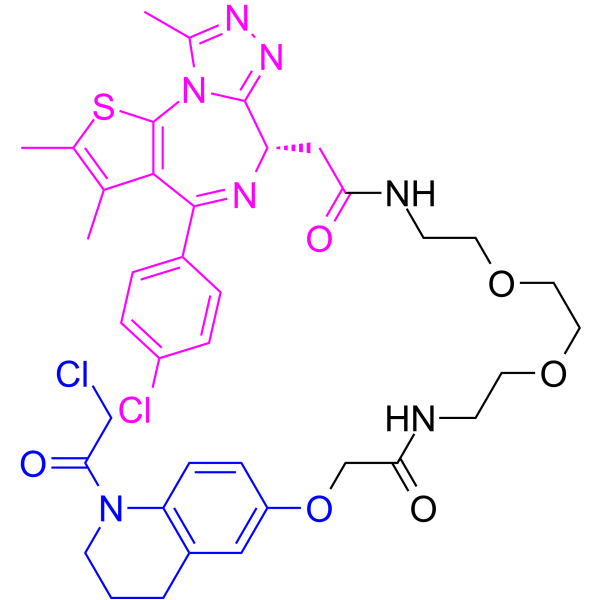
-
- HY-129610
-
|
|
PROTACs
FKBP
|
Cancer
|
|
KB02-SLF is a PROTAC-based nuclear FKBP12 degrader (molecular glue). KB02-SLF promotes nuclear FKBP12 degradation by covalently modifying DCAF16 (E3 ligase) and can improve the durability of protein degradation in biological systems. SLF binds ubiquitin E3 ligase ligand KB02 via a linker to form KB02-SLF .
|
-
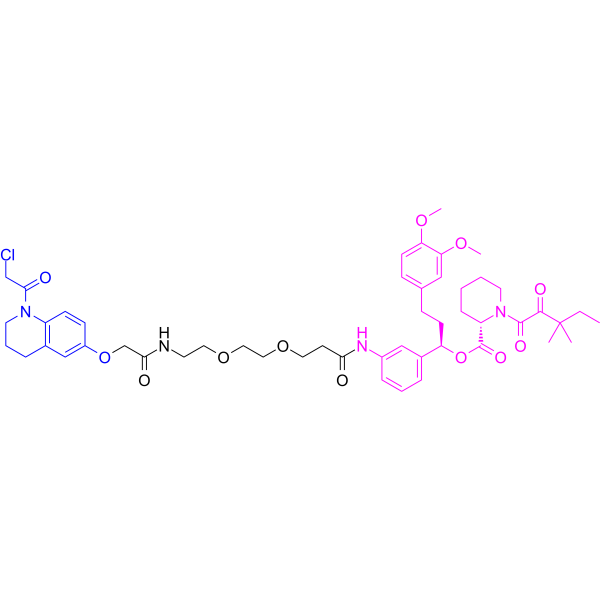
-
- HY-144981
-
|
|
CDK
Molecular Glues
|
Cancer
|
|
HQ461 is a molecular glue that promotes CDK12-DDB1 interaction to trigger cyclin K degradation. HQ461-mediated degradation of cyclin K impairs CDK12 function, resulting in decreased CDK12 substrate phosphorylation, downregulation of DNA damage response genes, and cell death .
|
-
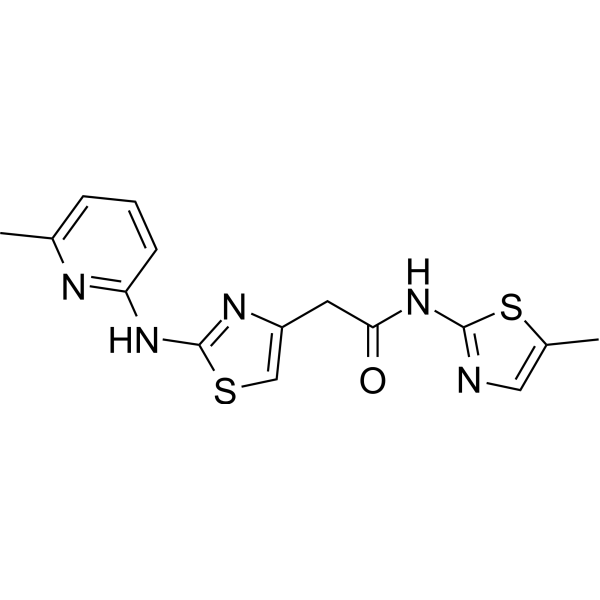
-
- HY-130122
-
|
|
Molecular Glues
PROTACs
Apoptosis
|
Cancer
|
|
MG-277, a molecular glue degrader, effectively induces degradation of a translation termination factor based on Cereblon E3 ligand, GSPT1, with a DC50 of 1.3 nM. MG-277 potently inhibits tumor cell growth in a p53-independent manner, with IC50s of 3.5 nM for RS4;11 cells and 3.4 nM for p53 mutant RS4;11/IRMI-2 cells, respectively. Anticancer activity .
|
-

-
- HY-160525
-
|
|
Molecular Glues
|
Cancer
|
|
CDO1 degrader-1 (compound 8) is a molecular glue degrader that targets cysteine dioxygenase (CDO1) .
|
-
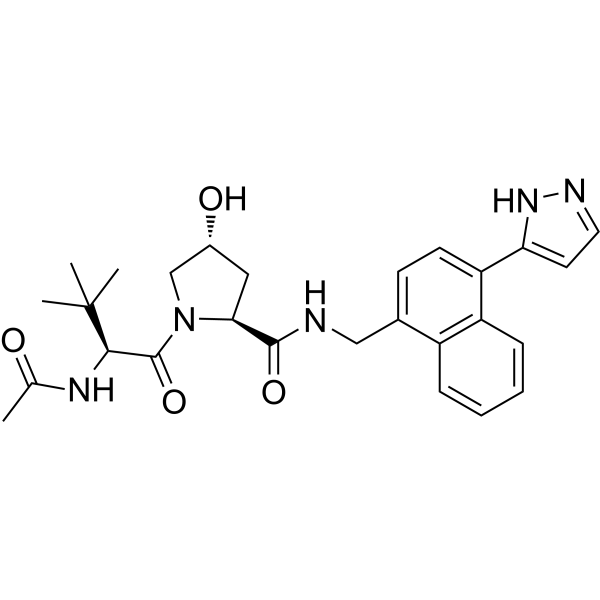
-
- HY-153385
-
-
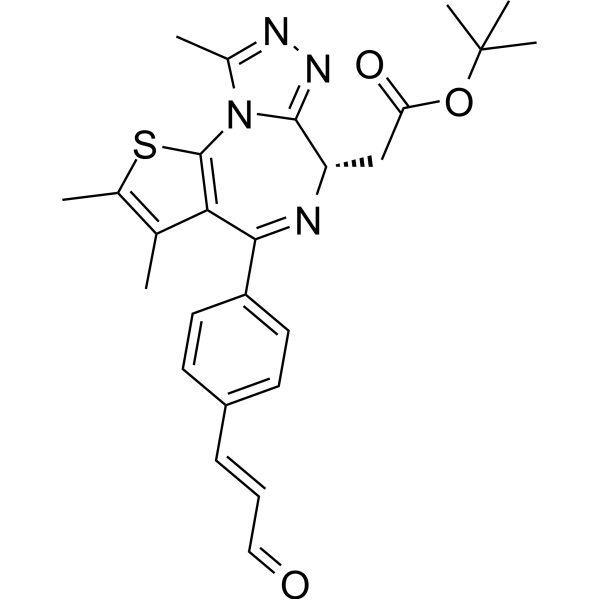
-
- HY-148523
-
|
|
Others
|
Cancer
|
|
HQ005 is a potent CCNK degrader with an DC50 value of 0.041 µM. HQ005 is a molecular-glue degrader that mediates interactions between target proteins and components of the ubiquitin-proteasome system to cause selective protein degradation .
|
-
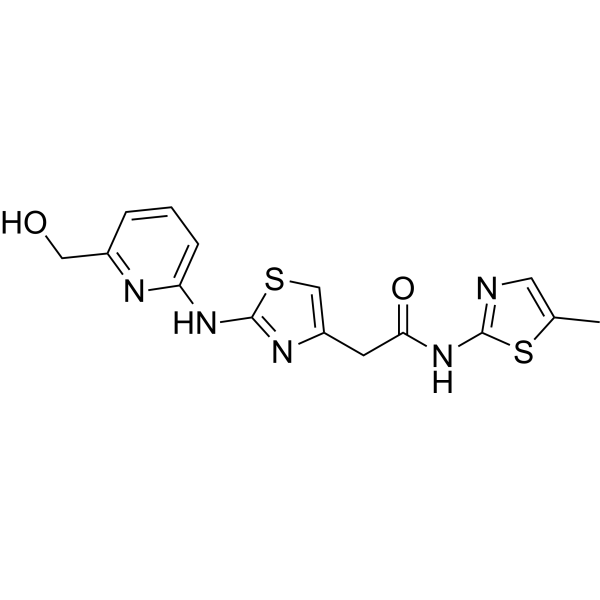
-
- HY-W584512
-
|
|
Others
|
Others
|
|
Thalidomide-NH-CH2-COO (t-Bu) is a molecular block of small-molecule degrader .
|
-

-
- HY-141676
-
|
|
Others
|
Others
|
|
HyT36 is a low molecular weight hydrophobic tag that promotes the degradation of fusion protein and pseudokinase Her3 .
|
-
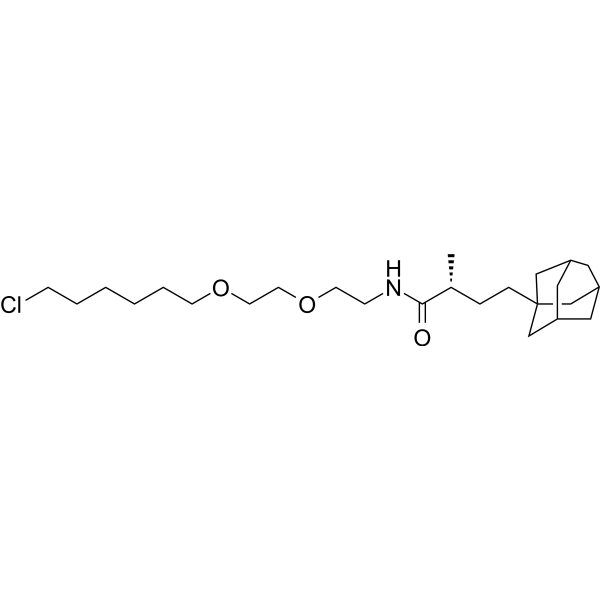
-
- HY-163064
-
|
|
LRRK2
|
Cancer
|
|
CC-3240 (compound 13) is a molecular glue degrader of CaMKK2 based on CC-8977, with the IC50 of 9 nM .
|
-

-
- HY-153803
-
|
|
PROTACs
Molecular Glues
Btk
|
Cancer
|
|
GBD-9 is a double-mechanism degrader that efficiently degrades BTK and GSPT1 by recruiting the E3 ligase cereblon (CRBN). GBD-9 acts both as a PROTAC molecule to induce the degradation of BTK and as a molecular glue to degrade GSPT1. GBD-9 effectively inhibits cancer cell growth .
|
-
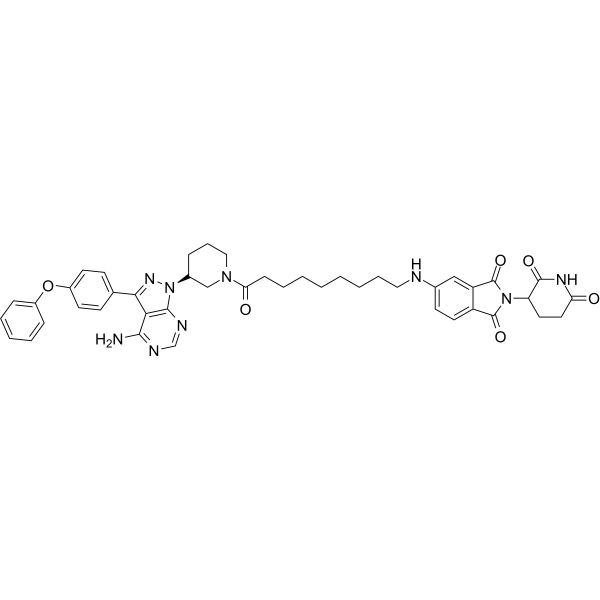
-
- HY-P2839
-
|
Heparinase I
|
Endogenous Metabolite
|
Metabolic Disease
|
|
Heparinase (Heparinase I) degrades heparin to oligosaccharide or unsaturated disaccharide. Heparinase can be used in the preparation of low molecular weight heparin (LMWH) .
|
-
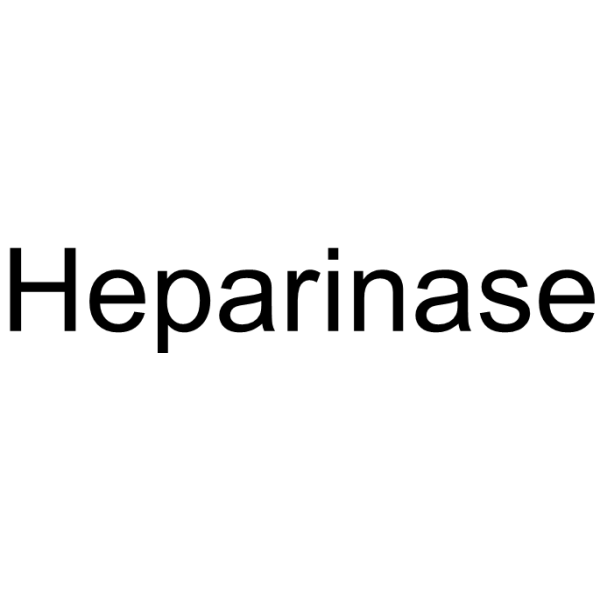
-
- HY-160501
-
|
|
Molecular Glues
CDK
|
Cancer
|
|
DS17 is a molecular glue that acts as a potent degrader of cyclin K, with an EC50 of 13 nM. DS17 plays an important role in cancer research .
|
-
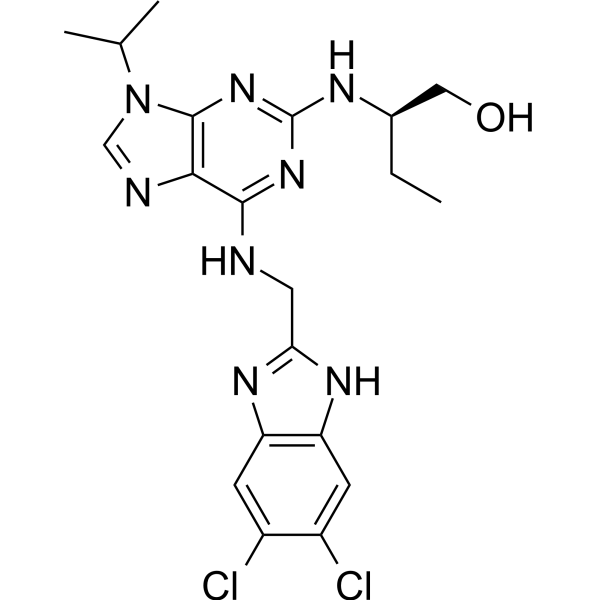
-
- HY-10984
-
|
CC-4047
|
Ligands for E3 Ligase
Molecular Glues
Apoptosis
|
Cancer
|
|
Pomalidomide, the third-generation immunomodulatory agent, acts as molecular glue. Pomalidomide interacts with the E3 ligase cereblon and induces degradation of essential Ikaros transcription factors.
|
-
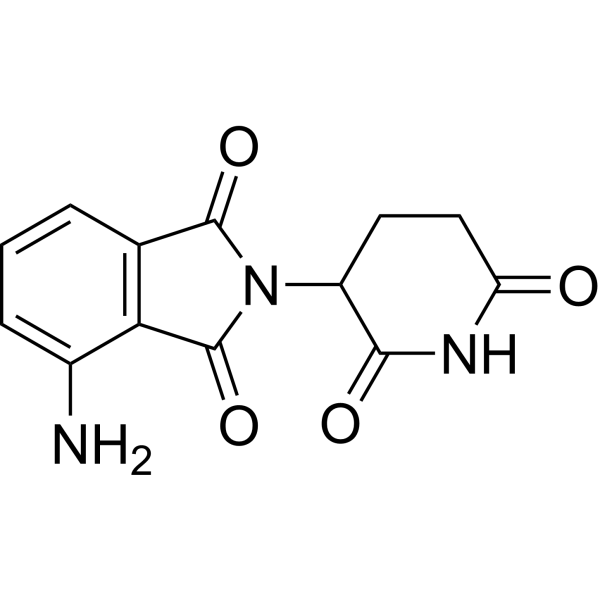
-
- HY-153220A
-
|
|
Btk
|
Inflammation/Immunology
Cancer
|
|
(R)-NX-2127 (compound 28) is an orally active Bruton’s Tyrosine Kinase (Btk) degrader. (R)-NX-2127 degrades IKZF1 and IKZF3 by molecular glue interactions with the cereblon E3 ubiquitin ligase complex .
|
-

-
- HY-156828
-
|
|
Others
|
Others
|
|
MMH2 is a novel BRD4 molecular glue degrader that functions by recruiting the CUL4 and DCAF16 ligases to the second bromodomain of BRD4 (BRD4BD2) .
|
-
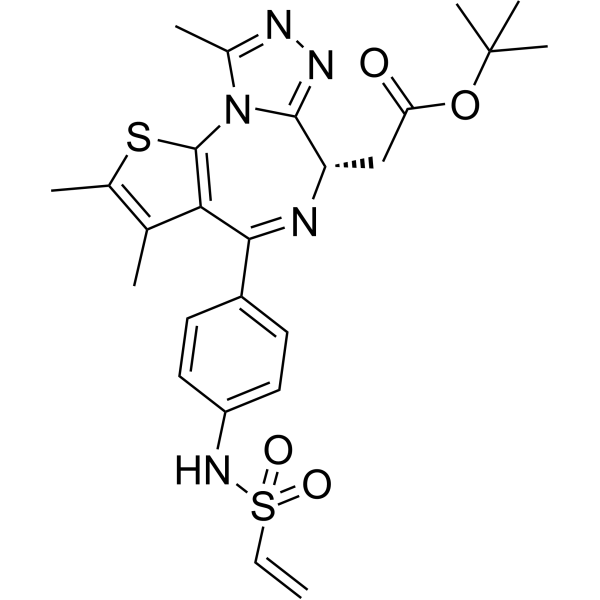
-
- HY-156827
-
|
|
Others
|
Others
|
|
MMH1 is a novel BRD4 molecular glue degrader that functions by recruiting the CUL4 and DCAF16 ligases to the second bromodomain of BRD4 (BRD4BD2) .
|
-
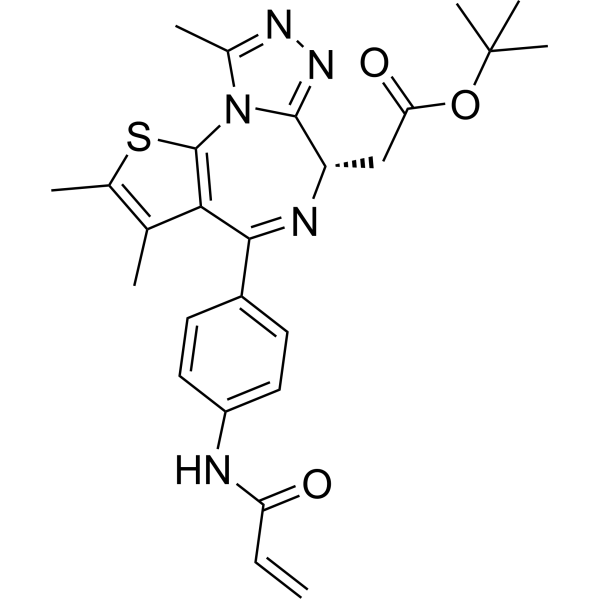
-
- HY-10984S
-
-
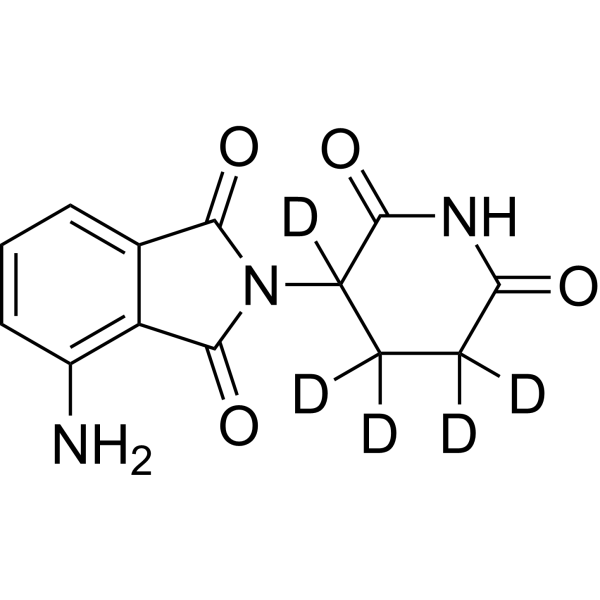
-
- HY-10984S2
-
-
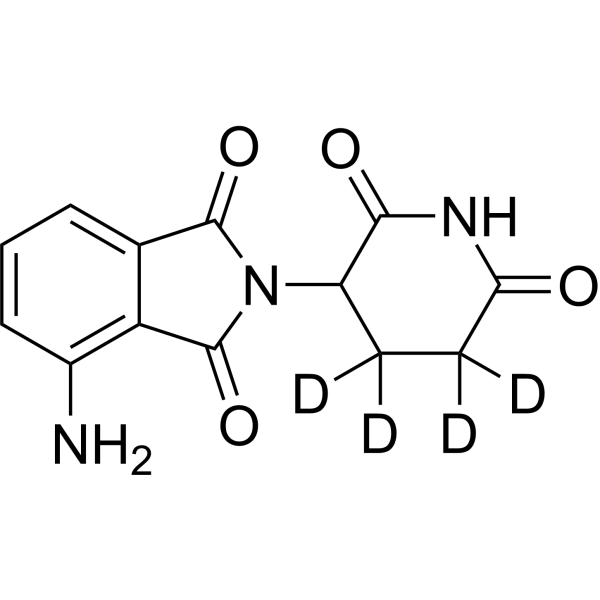
-
- HY-10984S1
-
|
CC-4047-d3
|
Ligands for E3 Ligase
Molecular Glues
Apoptosis
|
Cancer
|
|
Pomalidomide-d3 is the deuterium labeled Pomalidomide. Pomalidomide, the third-generation immunomodulatory agent, acts as molecular glue. Pomalidomide interacts with the E3 ligase cereblon and induces degradation of essential Ikaros transcription factors[1][2].
|
-

-
- HY-122311
-
|
SMTP-7
|
Reactive Oxygen Species
|
Neurological Disease
Inflammation/Immunology
|
|
Orniplabin (SMTP-7) is a low-molecular-weight compound that enhances plasminogen–fibrin binding, urokinase-catalyzed activation of plasminogen, and urokinase and plasminogen-mediated fibrin degradation. Orniplabin shows potential thrombolytic and anti-inflammatory effects. Orniplabin inhibits ROS .
|
-
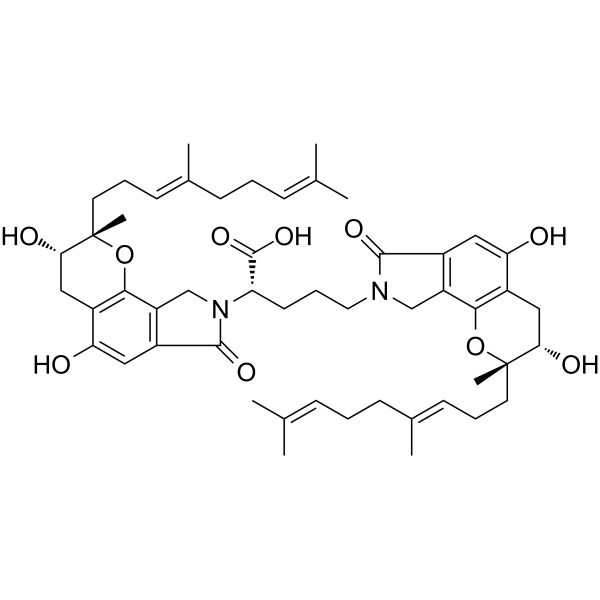
-
- HY-130800
-
-
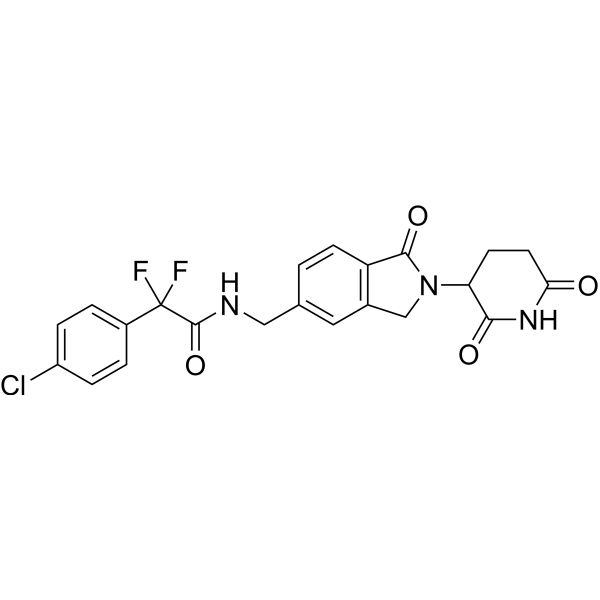
-
- HY-145319
-
-
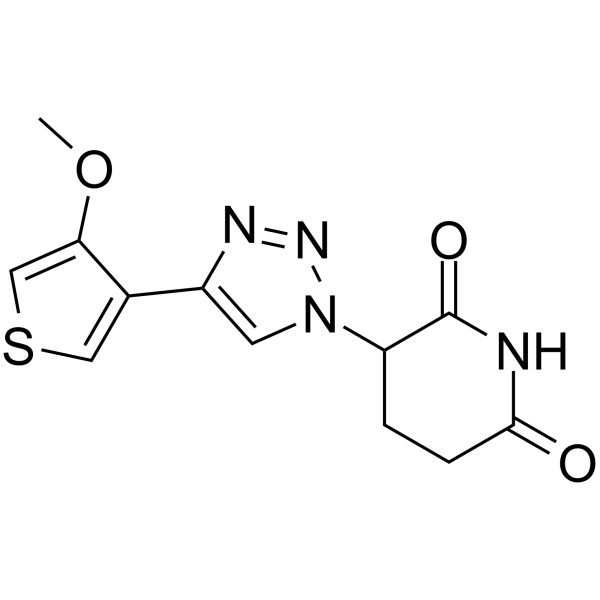
-
- HY-122704A
-
|
Aminoquincarbamide dihydrochloride
|
FGFR
HSV
VEGFR
|
Infection
|
|
Surfen dihydrochloride is a potent HS (heparan sulfate) antagonist. Surfen binds to glycosaminoglycans. Surfen neutralizes the anticoagulant activity of both unfractionated and low molecular weight heparins. Surfen affects sulfation of heparin and inhibits degradation by heparin lyases. Surfen inhibits FGF2 binding and signaling. Surfen inhibits cell attachment, and virus infection .
|
-

-
- HY-131863
-
|
|
Ligands for E3 Ligase
Apoptosis
Molecular Glues
|
Cancer
|
|
Pomalidomide 4'-alkylC8-acid is an E3 ubiquitin ligase ligand-Linker conjugate containing Pomalidomide (HY-10984). Pomalidomide is a third-generation immunomodulator that acts like a molecular glue. Pomalidomide interacts with the E3 ligase cereblon to induce degradation of the essential Ikaros transcription factor .
|
-
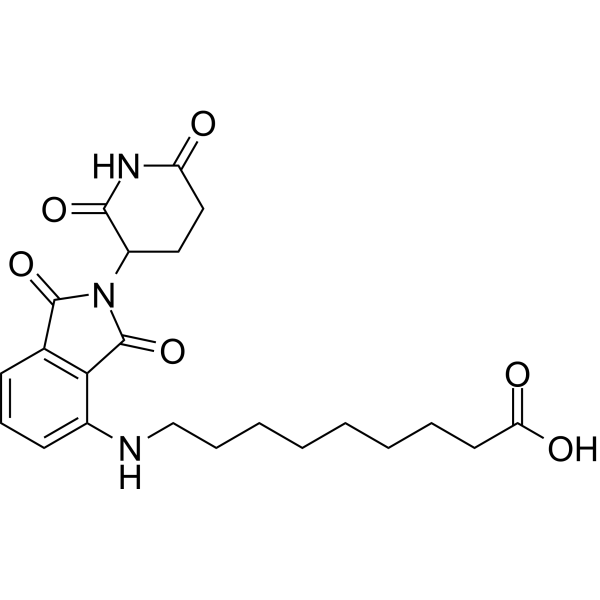
-
- HY-148776
-
|
|
Biochemical Assay Reagents
|
Others
|
|
PLGA-PEG-MAL (20kDA-5.0kDA, LA:GA ratio 50:50) is a kind of poly(lactide-co-glycolide)-block-poly(ethylene glycol) (PLGA-PEG-Mal) nanoparticles. PLGA-PEG-MAL (20kDA-5.0kDA, LA:GA ratio 50:50) has a molecular weight of 20kDA to 5.0kDA and contains a 50:50 ratio of lactic acid (LA) to glycolic acid (GA) molecules. The molecular ratio of LA to GA determines the rate of matrix degradation and protein re-release .
|
-
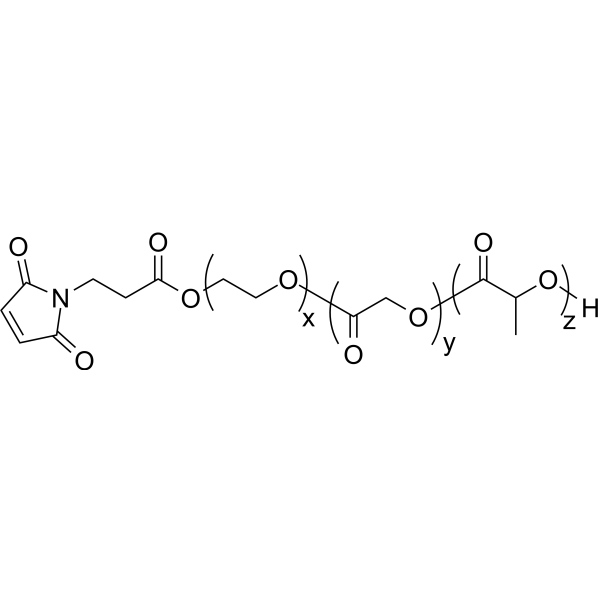
-
- HY-150641
-
|
|
CDK
Apoptosis
DNA/RNA Synthesis
|
Cancer
|
|
CDK-IN-9 (compound 24) is a potent CDK inhibitor, also as a molecular glue inducing an interaction between CDK12 and DDB1, with an IC50 values of 4 nM for CDK2/E. CDK-IN-9 leads to polyubiquitination of cyclin K and its subsequent degradation. CDK-IN-9 induce apoptosis through dephosphorylation of retinoblastoma protein and RNA polymerase II .
|
-
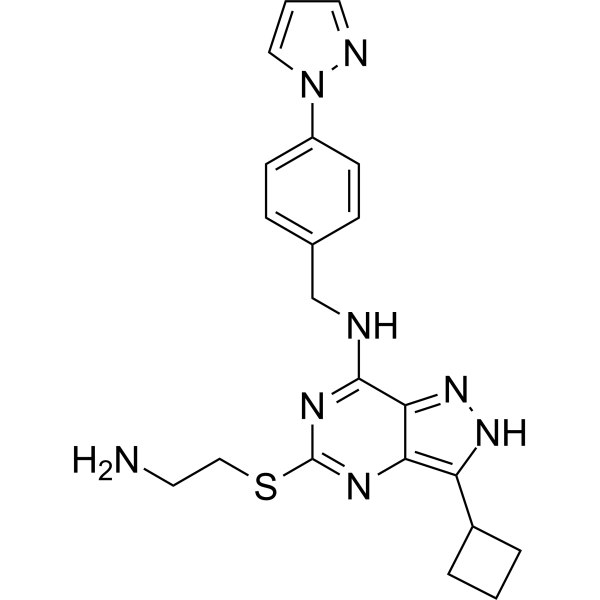
-
- HY-49444
-
|
|
NF-κB
E1/E2/E3 Enzyme
|
Cancer
|
|
EN450 is a cysteine-reactive covalent molecular glue degrader targeting NF-κB. EN450 interacts with allosteric C111 in the E2 ubiquitin ligase UBE2D. EN450 induces the ternary complex formation between UBE2D and NFKB1. EN450 exerts its anti-proliferative effects through a Cullin E3 ligase and proteasome-dependent mechanism .
|
-

-
- HY-115461
-
|
|
Insulin Receptor
|
Metabolic Disease
|
|
MID-1 is a disruptor of MG53-IRS-1 (Mitsugumin 53-insulin receptor substrate-1) interaction. MID-1 disrupts molecular association of MG53 with IRS-1 and abolishes MG53-induced IRS-1 ubiquitination and degradation in skeletal muscle, leading to elevated IRS-1 expression level and increased insulin signaling and glucose uptake .
|
-
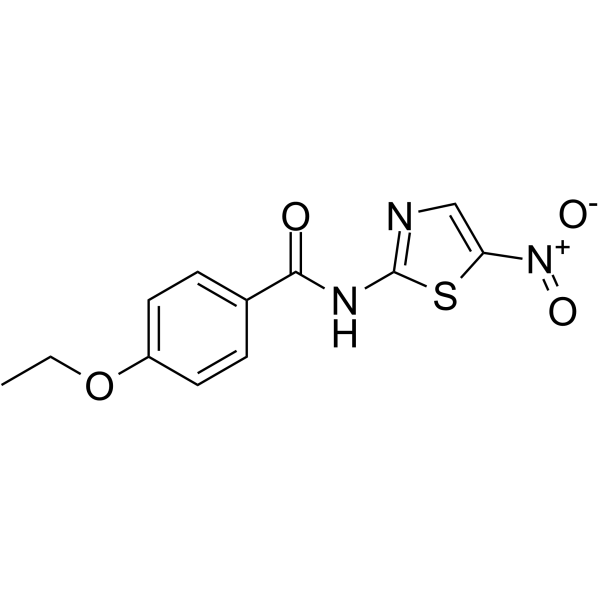
-
- HY-A0003
-
Lenalidomide
Maximum Cited Publications
32 Publications Verification
CC-5013
|
Ligands for E3 Ligase
Molecular Glues
Apoptosis
|
Inflammation/Immunology
Cancer
|
|
Lenalidomide (CC-5013), a derivative of Thalidomide, acts as molecular glue. Lenalidomide is an orally active immunomodulator. Lenalidomide (CC-5013) is a ligand of ubiquitin E3 ligase cereblon (CRBN), and it causes selective ubiquitination and degradation of two lymphoid transcription factors, IKZF1 and IKZF3, by the CRBN-CRL4 ubiquitin ligase. Lenalidomide (CC-5013) specifically inhibits growth of mature B-cell lymphomas, including multiple myeloma, and induces IL-2 release from T cells .
|
-
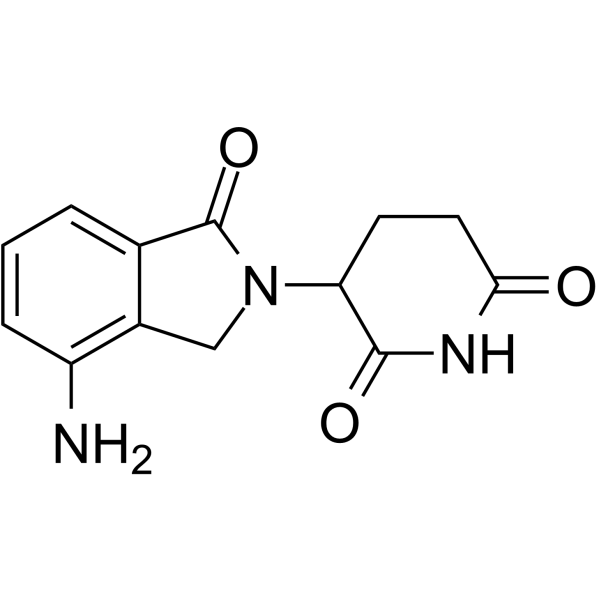
-
- HY-A0003B
-
|
CC-5013 hemihydrate
|
Ligands for E3 Ligase
Molecular Glues
Apoptosis
|
Cancer
|
|
Lenalidomide hemihydrate (CC-5013 hemihydrate), a derivative of Thalidomide, acts as molecular glue. Lenalidomide hemihydrate is an orally active immunomodulator. Lenalidomide hemihydrate (CC-5013 hemihydrate) is a ligand of ubiquitin E3 ligase cereblon (CRBN), and it causes selective ubiquitination and degradation of two lymphoid transcription factors, IKZF1 and IKZF3, by the CRBN-CRL4 ubiquitin ligase. Lenalidomide hemihydrate (CC-5013 hemihydrate) specifically inhibits growth of mature B-cell lymphomas, including multiple myeloma, and induces IL-2 release from T cells .
|
-
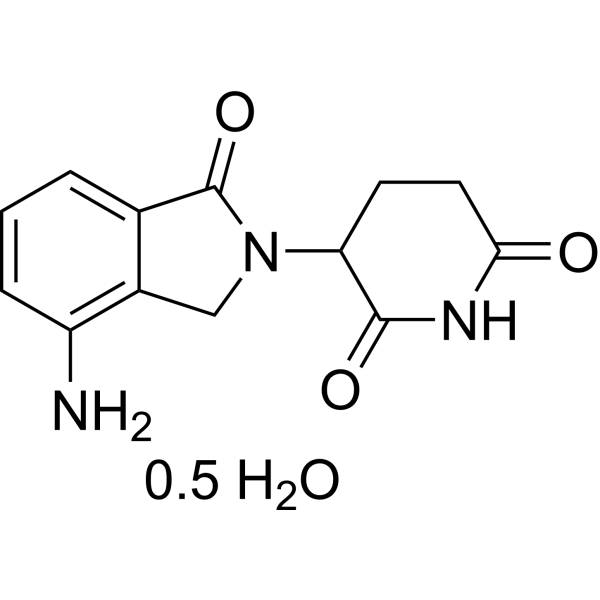
-
- HY-A0003A
-
|
CC-5013 hydrochloride
|
Ligands for E3 Ligase
Molecular Glues
|
Inflammation/Immunology
Cancer
|
|
Lenalidomide hydrochloride (CC-5013 hydrochloride), a derivative of Thalidomide, acts as molecular glue. Lenalidomide hydrochloride is an orally active immunomodulator. Lenalidomide hydrochloride (CC-5013 hydrochloride) is a ligand of ubiquitin E3 ligase cereblon (CRBN), and it causes selective ubiquitination and degradation of two lymphoid transcription factors, IKZF1 and IKZF3, by the CRBN-CRL4 ubiquitin ligase. Lenalidomide hydrochloride (CC-5013 hydrochloride) specifically inhibits growth of mature B-cell lymphomas, including multiple myeloma, and induces IL-2 release from T cells .
|
-
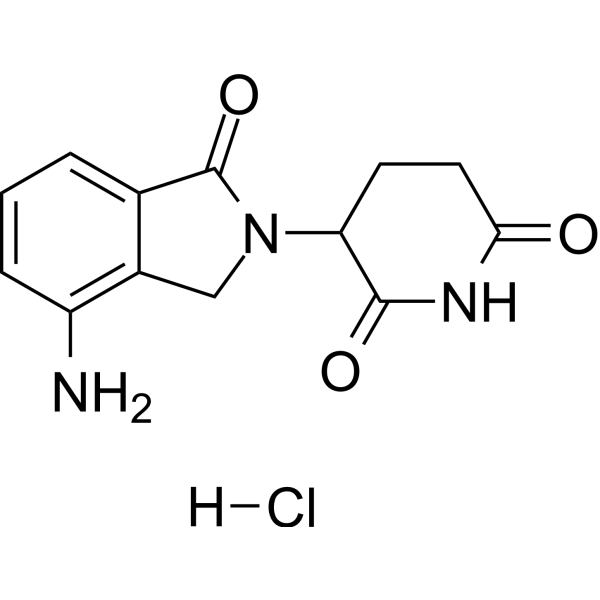
-
- HY-141881
-
|
|
PROTACs
Apoptosis
SF3B1
|
Cancer
|
|
PROTAC-O4I2 is a PROTAC targets splicing factor 3B1 (SF3B1). PROTAC-O4I2 induces FLAG-SF3B1 degradation with an IC50 value of 0.244 μM in K562 cells. PROTAC-O4I2 also induces cellular apoptosis in K562 WT cells .
|
-
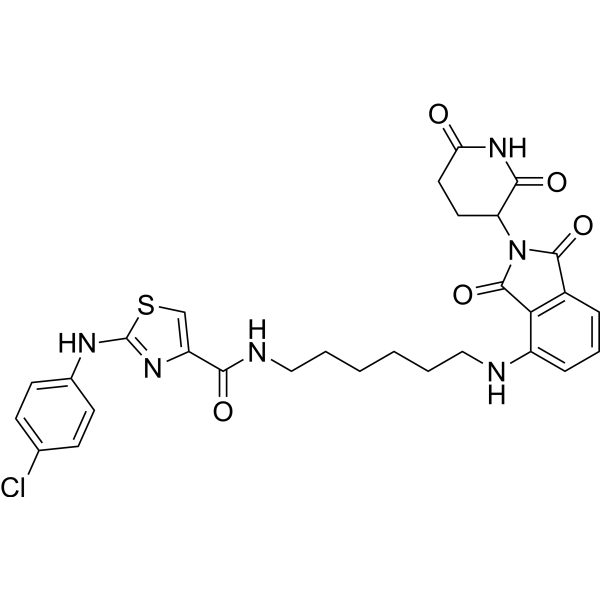
-
- HY-A0003S
-
|
CC-5013-d5
|
Isotope-Labeled Compounds
Ligands for E3 Ligase
Molecular Glues
Apoptosis
|
Inflammation/Immunology
Cancer
|
|
Lenalidomide-d5 is deuterium labeled Lenalidomide. Lenalidomide (CC-5013), a derivative of Thalidomide, acts as molecular glue. Lenalidomide is an orally active immunomodulator. Lenalidomide (CC-5013) is a ligand of ubiquitin E3 ligase cereblon (CRBN), and it causes selective ubiquitination and degradation of two lymphoid transcription factors, IKZF1 and IKZF3, by the CRBN-CRL4 ubiquitin ligase. Lenalidomide (CC-5013) specifically inhibits growth of mature B-cell lymphomas, including multiple myeloma, and induces IL-2 release from T cells[1][2].
|
-

-
- HY-N10502
-
|
|
MDM-2/p53
HSP
|
Cancer
|
|
Colletofragarone A2 can be be isolated from the fungus Colletotrichum sp. (13S020). Colletofragarone A2 inhibits mutant p53 and HSP90 with anti-cancer activity. Colletofragarone A2 promotes degradation and aggregation of mutant p53 and suppressing tumor growth in vivo .
|
-
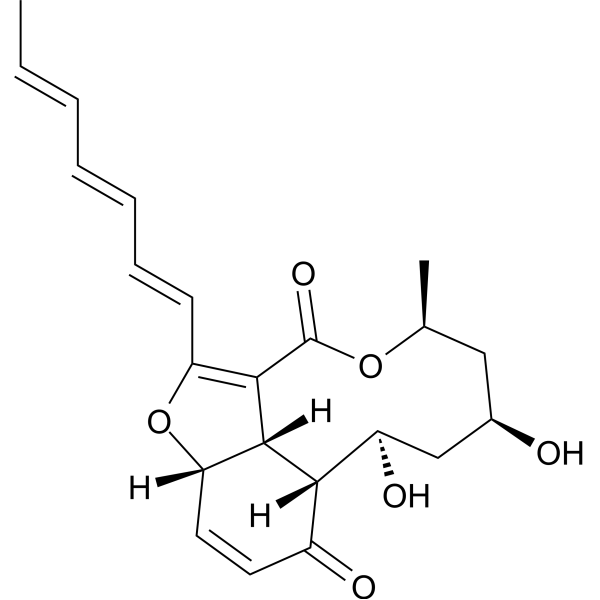
-
- HY-18340
-
|
CR8, (R)-Isomer
|
Molecular Glues
CDK
Apoptosis
|
Neurological Disease
Cancer
|
|
(R)-CR8 (CR8), a second-generation analog of Roscovitine, is a potent CDK1/2/5/7/9 inhibitor. (R)-CR8 inhibits CDK1/cyclin B (IC50=0.09 μM), CDK2/cyclin A (0.072 μM), CDK2/cyclin E (0.041 μM), CDK5/p25 (0.11 μM), CDK7/cyclin H (1.1 μM), CDK9/cyclin T (0.18 μM) and CK1δ/ε (0.4 μM). (R)-CR8 induces apoptosis and has neuroprotective effect . (R)-CR8 acts as a molecular glue degrader that depletes cyclin K .
|
-

-
- HY-18340A
-
|
CR8, (R)-Isomer trihydrochloride
|
Molecular Glues
CDK
Apoptosis
|
Neurological Disease
Cancer
|
|
(R)-CR8 (CR8) trihydrochloride, a second-generation analog of Roscovitine, is a potent CDK1/2/5/7/9 inhibitor. (R)-CR8 trihydrochloride inhibits CDK1/cyclin B (IC50=0.09 μM), CDK2/cyclin A (0.072 μM), CDK2/cyclin E (0.041 μM), CDK5/p25 (0.11 μM), CDK7/cyclin H (1.1 μM), CDK9/cyclin T (0.18 μM) and CK1δ/ε (0.4 μM). (R)-CR8 trihydrochloride induces apoptosis and has neuroprotective effect . (R)-CR8 trihydrochloride acts as a molecular glue degrader that depletes cyclin K .
|
-
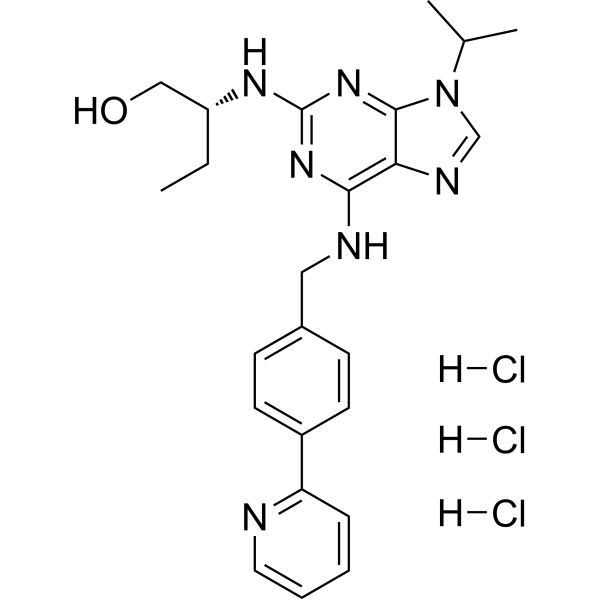
-
-
HY-L137
-
|
|
35 Compounds compounds
|
|
Targeted protein degradation(TPD) is a novel and promising approach to new drug discovery and development. It shows great potential for treating diseases with “undruggable” pathogenic protein targets and for overcoming drug resistance. Molecular glues and PROTACs are both targeted protein degraders that have attracted the most attention.
Molecular glues are small molecular degraders that mainly induce novel interaction between an E3 ligase and a target protein to form a ternary complex, leading to protein ubiquitination and subsequent proteasome degradation. Compared with PROTACs, molecular glues generally possess more favorable drug-like properties, such as lower MW, higher cell permeability, and better oral absorption. Molecular glues are emerging as a promising new therapeutic strategy.
MCE supplies a unique collection of 35 molecular glues which target various proteins. MCE Molecular Glue Compound Library is a useful tool to conduct scientific research and disease mechanism study.
|
| Cat. No. |
Product Name |
Type |
-
- HY-P2839
-
|
Heparinase I
|
Biochemical Assay Reagents
|
|
Heparinase (Heparinase I) degrades heparin to oligosaccharide or unsaturated disaccharide. Heparinase can be used in the preparation of low molecular weight heparin (LMWH) .
|
| Cat. No. |
Product Name |
Target |
Research Area |
-
- HY-106263B
-
|
|
Peptides
|
Cancer
|
|
Tyroserleutide hydrochloride, isolated from the degradation products of porcine spleen , is a small molecular tripeptide which inhibits tumor growth both in vitro and in vivo .
|
-
- HY-P2839
-
|
Heparinase I
|
Endogenous Metabolite
|
Metabolic Disease
|
|
Heparinase (Heparinase I) degrades heparin to oligosaccharide or unsaturated disaccharide. Heparinase can be used in the preparation of low molecular weight heparin (LMWH) .
|
-
- HY-106263
-
|
|
Peptides
|
Cancer
|
|
Tyroserleutide (YSL), isolated from the degradation products of porcine spleen , is a small molecular tripeptide which inhibits tumor growth both in vitro and in vivo .
|
-
- HY-106263A
-
|
|
Peptides
|
Cancer
|
|
Tyroserleutide TFA, isolated from the degradation products of porcine spleen , is a small molecular tripeptide which inhibits tumor growth both in vitro and in vivo .
|
| Cat. No. |
Product Name |
Category |
Target |
Chemical Structure |
| Cat. No. |
Product Name |
Chemical Structure |
-
- HY-10984S1
-
|
|
|
Pomalidomide-d3 is the deuterium labeled Pomalidomide. Pomalidomide, the third-generation immunomodulatory agent, acts as molecular glue. Pomalidomide interacts with the E3 ligase cereblon and induces degradation of essential Ikaros transcription factors[1][2].
|
-

-
- HY-A0003S
-
|
|
|
Lenalidomide-d5 is deuterium labeled Lenalidomide. Lenalidomide (CC-5013), a derivative of Thalidomide, acts as molecular glue. Lenalidomide is an orally active immunomodulator. Lenalidomide (CC-5013) is a ligand of ubiquitin E3 ligase cereblon (CRBN), and it causes selective ubiquitination and degradation of two lymphoid transcription factors, IKZF1 and IKZF3, by the CRBN-CRL4 ubiquitin ligase. Lenalidomide (CC-5013) specifically inhibits growth of mature B-cell lymphomas, including multiple myeloma, and induces IL-2 release from T cells[1][2].
|
-

-
- HY-10984S
-
|
|
|
Pomalidomide-d5 is deuterium labeled Pomalidomide. Pomalidomide, the third-generation immunomodulatory agent, acts as molecular glue. Pomalidomide interacts with the E3 ligase cereblon and induces degradation of essential Ikaros transcription factors.
|
-

-
- HY-10984S2
-
|
|
|
Pomalidomide-d4 is the deuterium labeled Pomalidomide. Pomalidomide, the third-generation immunomodulatory agent, acts as molecular glue. Pomalidomide interacts with the E3 ligase cereblon and induces degradation of essential Ikaros transcription factors<
|
-

Your information is safe with us. * Required Fields.
Inquiry Information
- Product Name:
- Cat. No.:
- Quantity:
- MCE Japan Authorized Agent:













































